| University | Kaplan University (KU) |
| Subject | Introduction to Management |
Learning Objectives
LO1 Summarize the basic steps in any planning process
LO2 Describe how strategic planning should be integrated with tactical and operational planning
LO3 Describe how strategy is base on analysis of the external environment and the firm’s strengths and weaknesses.
LO4 Discuss how companies can achieve competitive advantage through business strategy
LO5 Describe the keys to effective strategy implementation
LO6 Explain how to make effective decisions as a manager.
LO7 Summarize principles for group decision making
Planning
- Planning -conscious, systematic process of making decisions about goals and activities that an individual, group, work unit, or organization will pursue in the future. -a purposeful effort that is directed and controlled by managers and often draws on the knowledge and experience of employees throughout the organization.
Goals, plans and performance
- Goal -A desired future state that the organisation attempts to realise.
- Plan -A blueprint specifying the resource allocations, schedules and other actions necessary for attaining goals.
- Managers must decide organisation’s future & how to get there.
- Smaller organisation’s planning can be more informal
- Eg. of Planning: new product design, reduce costs, increase profits & quality & customer satisfaction, internationalisation etc.
Hire a Professional Essay & Assignment Writer for completing your Academic Assessments
Native Singapore Writers Team
- 100% Plagiarism-Free Essay
- Highest Satisfaction Rate
- Free Revision
- On-Time Delivery
The new planning approach
- Traditional approaches to planning:
-Centralised planning department (Top Down)
-A group of planning specialists who develop plans for the organisation as a whole and its major divisions and departments, and typically report to the
CEO.
- Modern approaches to planning:
-Decentralised planning staff (Bottom Up)
-A group of planning specialists assigned to major departments and divisions to help managers develop their own strategic plans
Core Components of Planning
Objectives
- Goals or targets that the firm wishes to reach within a stated amount of time
Actions
- The specific steps the firm intends to take to achieve the desired objectives
Resource Allocation
- A plan states where resources will come from and how they will be deployed
Implementation Guidelines
- Show how the intended actions will be carried out
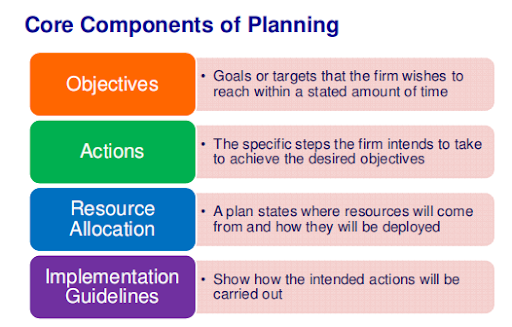
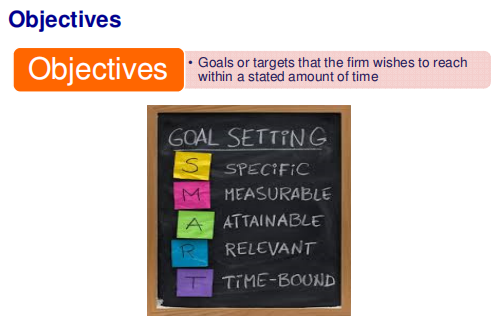
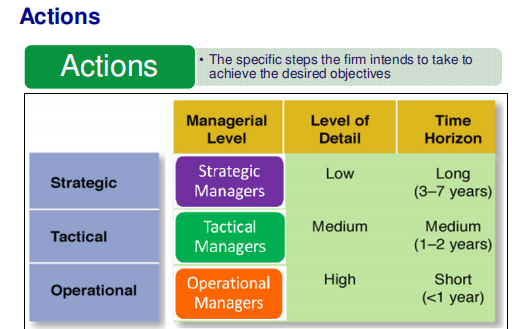
Resource Allocation
- A plan states where resources will come from and how they will be deployed
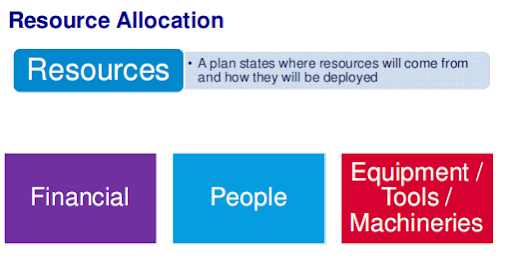
Buy Custom Answer of This Assessment & Raise Your Grades

The Strategic Management Process
A process that involves managers from all parts of the organization in the formulation and implementation of strategic goals and strategies
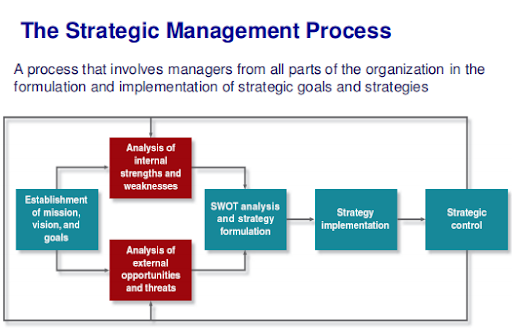
Establishment of Mission, Vision, and Goals
- Mission
-An organization’s basic purpose and scope of operations.
McDonalds – “To be our customers’ favourite place and way to eat.”
Apple – “Apple computer is committed to protecting the environment, health and safety of our employees, customers and the global communities where we operate.”
Kaplan Singapore – “helps individuals achieve their educational and career goals. Kaplan Singapore builds futures one success story at a time.”
Analysis of External Opportunities and Threats
- Stakeholders
– External groups and individuals who affect and are affected by the achievement of the organization’s mission, goals, and strategies
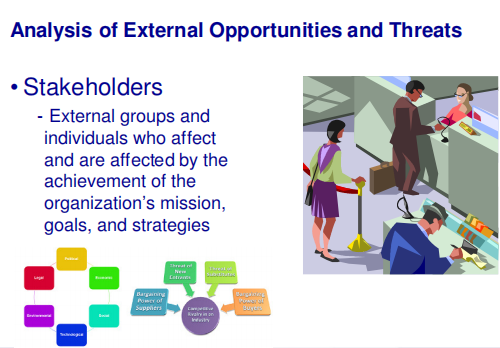
Analysis of Internal Strengths and Weaknesses
- Resources
-Inputs to a system that can enhance performance
-Tangible, intangible assets
Tangible resources
- Financial
- Physical
- Workers
Intangible resources
- Reputation
- Technology
- Human capital
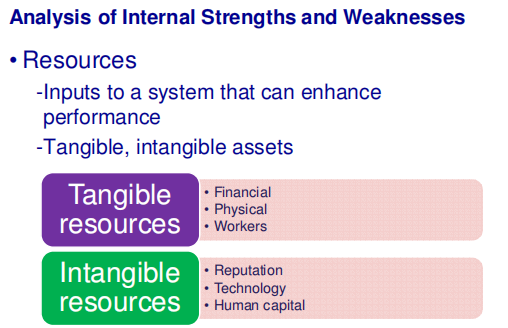
SWOT Analysis and Strategy Formulation
- SWOT analysis
-A comparison of strengths, weaknesses, opportunities, and threats that helps executives formulate strategy.
SWOT Analysis – An Example
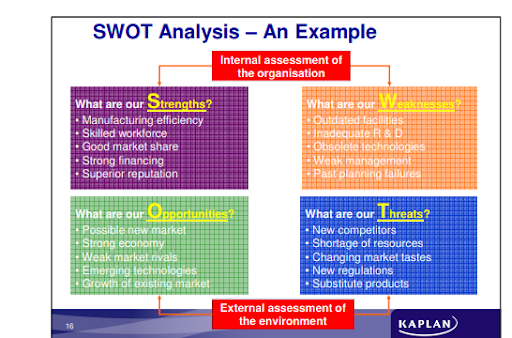
Strategy Formulation
- Corporate Level Strategies
-Growth, Stability or Retrenchment - Diversification Strategies
-Decision to concentrate on single business or multiple types of business - Business Level Strategies
-Cost Leadership – offer standard, no-frills product
-Differentiation – being unique in its industry or market segment along one or more dimensions
BCG Matrix
Technique used by companies to analyse its strategy based on portfolio analysis.
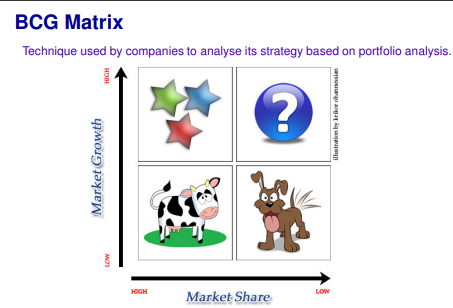
Tutorial: Individual Discussion Question
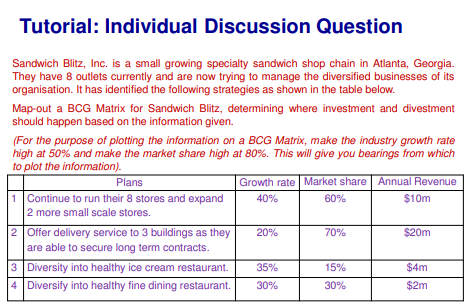
Stuck with a lot of homework assignments and feeling stressed ? Take professional academic assistance & Get 100% Plagiarism free papers
Need help with your ITM Bridging Topic 03 - Planning assignment? Look no further! Our online assignment writing services provide Singaporean students with the expert support they need to succeed. If you're wondering, “Can I pay someone to take my online exam for me?” the answer is yes! Our team is ready to assist you with all your coursework. Enjoy top-notch coursework writing help in Singapore and watch your grades soar. Get in touch with us today and experience the difference!
Looking for Plagiarism free Answers for your college/ university Assignments.
- 7WBS2012 Executive Career Development Assignment: Career Pathway & Readiness Post-MBA in Education Management
- CVE2322 Gantry Build Prototype Assignment: Sustainable Civil Engineering Model Using Recyclable Materials
- BMG706 Strategic Quality Change Assignment Report: Enhancing Operational Excellence at any Organization
- CVE2323 Structural Analysis Assignment: Matrix Method & STAAD.Pro Evaluation of Frame Systems
- BMK3015 Major Project Assignment: Customer-Centric Design Solutions Using Research & Project Management
- Wellbeing Assignment: University Students’ Perspectives for Improving Mental Health Support
- BCLO001 Business Statistics Assignment: Analysis of Exercise Duration Among Singaporean Students
- BM4364 Customer Experience Assignment: Evaluating CX Practices Through Employee Insights in the Service Industry
- GSFM7514 Accounting & Finance Assignment: SAC Services & MEMC Budgeting and CCID Investment Evaluation
- BM0973 BCRM Assignment: Genting Highlands Case Study for Crisis Response and AI-Supported Recommendations

